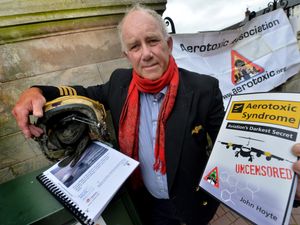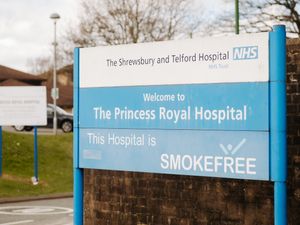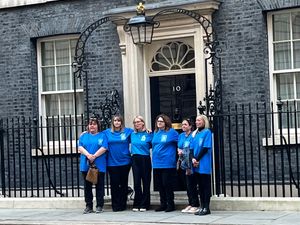New report into syndrome affecting pilots welcomed by Shropshire man
A Shropshire pilot has welcomed a new report into Aerotoxic Syndrome, which saw him because seriouly ill and unable to continue his job.

John Hoyte, 66, of Bridgnorth, is chairman of the not-for-profit Aerotoxic Association, the charity which he founded in 2007 to help support others fight the cause for all those affected by Aerotoxic Syndrome.
The syndrome is believed to be caused by exposure to contaminated cabin air. It causes mainly neurological adverse health effects.
John and others affected are fighting to have the condition officially recognised as an occupational disease by governments, airline operators, aviation authorities and state doctors in the UK and across the world.
They also want the installation of air quality sensors in aircraft cockpits and cabins to alert pilots to air contamination.
He welcomed the new report and its calls for change.
"It says the aircraft cabin of the future should have improved engine seal designs to minimize oil leakage, continuous air quality monitoring, with in-situ real time and delayed analysis, bleed air sensors, distributed across the cabin, and new cabin air filter technology to improve cabin air quality," he said.
The new report by experts from the UK and the Netherlands, looks at the science behind Aerotoxic Syndrome and the most frequently reported symptoms - headache, balance problems, fatigue, gastro-intestinal complaints and cognitive impairment.
It says a potential contaminant in cabin air is carbonmonoxide.
" Carbonmonoxide exposure is well known in aircraft fueling vehicles, or due to exhaust fumes from the combustion engines, and was reported by pilots of small airplanes in civil aviation. The most common physical symptoms of chronic low-level carbon-monoxide toxicity are headache, dizziness, breathing difficulties, nausea, and flu-like symptoms," the reports says/
John said calculations, claimed there could be as many as one million aircrew and frequent flyers who are unknowingly affected by Aerotoxic Syndrome in Europe alone.
The Civil Aviation Authority has responded to the report saying it does not think that it represents new information.
John's flying career began in Shropshire in 1982 and he went on to do maritime pollution patrol including the Piper Alpha oil rig disaster and flew ad hoc day/night freight in Europe. He then began doing overnight parcel deliveries.
He suddenly, mysteriously ill in the spring of 1990 but carried on flying until 2005 when he lost his medical licence and his licence to fly, aged only 49. He was able to reinstate his pilot's licence in 2014.
In early 2006, John was tested with 26 other pilots for toxic cabin air poisoning by his union Balpa and Professor Sarah Mackenzie Ross of University College London.
“I was told I had been suffering from ‘Aerotoxic Syndrome’ and after a small amount of investigation, I soon realised that this still little-known illness had been first identified in 1999 by a US doctor, a French forensic scientist and an Australian toxicologist.
He said: “For the past 16 years, I’ve been raising awareness with many others by supporting survivors and working to have the illness finally recognised.”





